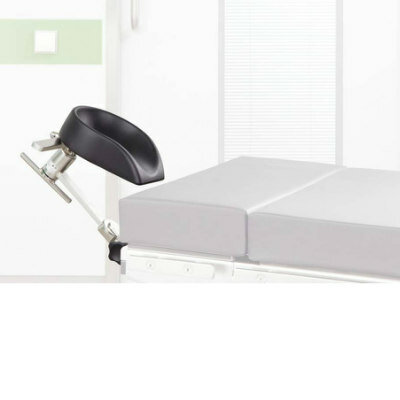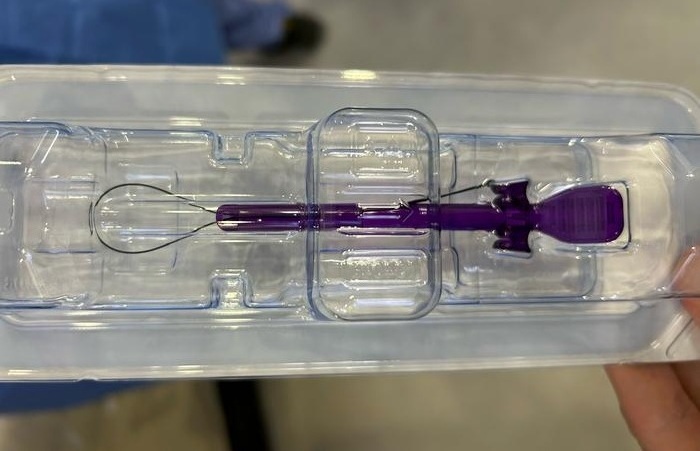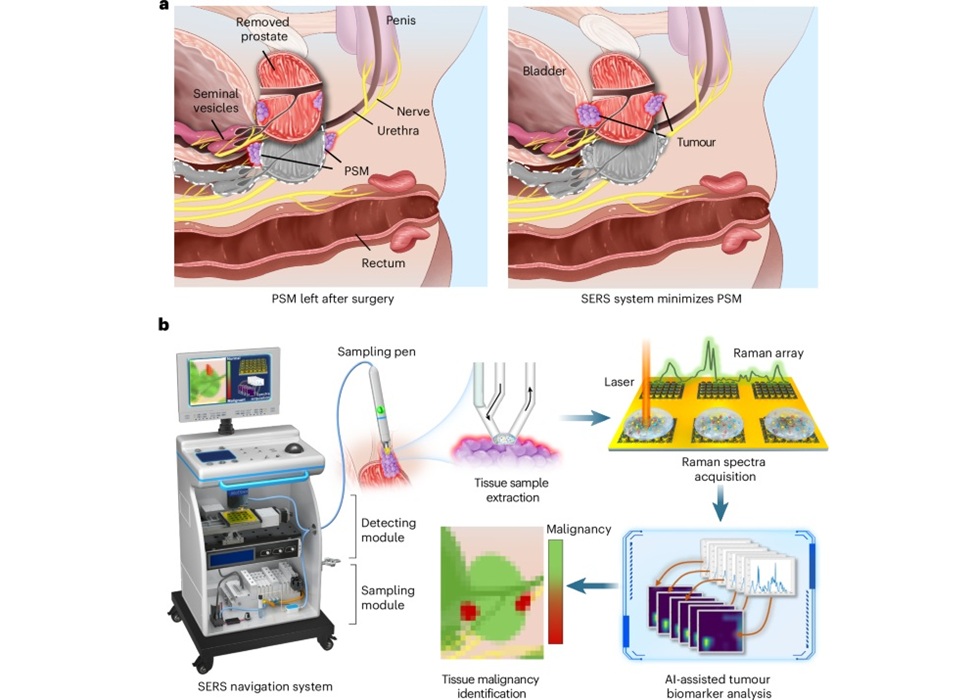Headache after Childbirth Epidural Could Indicate Subdural Hematoma
|
By HospiMedica International staff writers Posted on 29 Oct 2019 |
Women who experience headaches following neuraxial anesthesia prior to giving birth have a greater risk of developing intracranial subdural hematoma (ISH), according to a new study.
Researchers at McGill University (Montreal, Canada) and the University of Toronto (UT; Canada) reviewed the outcomes of 22,130,815 patients and deliveries in the United States between January 2010 and December 2016 in order to determine the association of post–dural puncture headache with postpartum ISH. Patients were included if they had two months of follow-up data, and did not receive a diagnostic lumbar puncture. The main outcome was ISH in the two-month postpartum period, with secondary outcomes including in-hospital mortality and occurrence of neurosurgery.
In all, there were 68,374 post–dural puncture headaches, for an overall rate of 309 per 100,000. There were 342 cases of ISH identified, indicating an incidence rate of 1.5 per 100,000 women. Of these, 100 cases were in women with post–dural puncture headache, indicating a rate of 147 hematoma cases per 100,000 deliveries in this subgroup. After adjustment for maternal age, cesarean delivery, hypertension, preeclampsia, and other co-morbidities, post–dural puncture headache had an odds ratio for subdural hematoma of 199, and an adjusted absolute risk increase of 130 per 100,000 deliveries. The study was published on September 16, 2019, in JAMA Neurology.
“When a patient has a post-dural puncture headache, they are at risk for a subdural hematoma, which can result in serious morbidity and increased mortality, and needs to be considered by any clinician looking after these patients,” said lead author Albert Moore, MD, of McGill University. “The risk is higher in patients who have coagulopathy, previous cerebral arteriovenous malformations, and hypertensive disease, and there is also a possibility that delaying a blood patch may increase the risk of developing a subdural hematoma.”
Post–dural puncture headache is thought to be caused by decreased intracranial pressure attributable to the leakage of cerebrospinal fluid (CSF) through the dural disruption, which places traction on pain-sensitive structures. Treatment often involves a blood patch, which is the injection of autologous whole blood into the epidural space. As pregnant women frequently receive neuraxial anesthesia for childbirth, they may develop symptoms of a post–dural puncture headache after their hospital discharge.
Related Links:
McGill University
University of Toronto
Researchers at McGill University (Montreal, Canada) and the University of Toronto (UT; Canada) reviewed the outcomes of 22,130,815 patients and deliveries in the United States between January 2010 and December 2016 in order to determine the association of post–dural puncture headache with postpartum ISH. Patients were included if they had two months of follow-up data, and did not receive a diagnostic lumbar puncture. The main outcome was ISH in the two-month postpartum period, with secondary outcomes including in-hospital mortality and occurrence of neurosurgery.
In all, there were 68,374 post–dural puncture headaches, for an overall rate of 309 per 100,000. There were 342 cases of ISH identified, indicating an incidence rate of 1.5 per 100,000 women. Of these, 100 cases were in women with post–dural puncture headache, indicating a rate of 147 hematoma cases per 100,000 deliveries in this subgroup. After adjustment for maternal age, cesarean delivery, hypertension, preeclampsia, and other co-morbidities, post–dural puncture headache had an odds ratio for subdural hematoma of 199, and an adjusted absolute risk increase of 130 per 100,000 deliveries. The study was published on September 16, 2019, in JAMA Neurology.
“When a patient has a post-dural puncture headache, they are at risk for a subdural hematoma, which can result in serious morbidity and increased mortality, and needs to be considered by any clinician looking after these patients,” said lead author Albert Moore, MD, of McGill University. “The risk is higher in patients who have coagulopathy, previous cerebral arteriovenous malformations, and hypertensive disease, and there is also a possibility that delaying a blood patch may increase the risk of developing a subdural hematoma.”
Post–dural puncture headache is thought to be caused by decreased intracranial pressure attributable to the leakage of cerebrospinal fluid (CSF) through the dural disruption, which places traction on pain-sensitive structures. Treatment often involves a blood patch, which is the injection of autologous whole blood into the epidural space. As pregnant women frequently receive neuraxial anesthesia for childbirth, they may develop symptoms of a post–dural puncture headache after their hospital discharge.
Related Links:
McGill University
University of Toronto
Latest Critical Care News
- Nasal Drops Fight Brain Tumors Noninvasively
- AI Helps Optimize Therapy Selection and Dosing for Septic Shock
- Glowing Bacteria ‘Pills’ for Detecting Gut Diseases Could Eliminate Colonoscopies
- Skin-Permeable Polymer Patch Delivers Insulin Non-Invasively Through Skin
- Nanogel Technology Almost 100% Effective in Destroying Drug-Resistant Bacteria Within Hours
- Wearable Ultrasound Sensor Delivers Noninvasive Treatment Without Surgery
- Gel-Free ECG System to Transform Heart Health Diagnosis
- Biodegradable Patch Repairs Damaged Tissue After Heart Attack
- Magnetically Guided Microrobots to Enable Targeted Drug Delivery

- Smart Nanomaterials Detect and Treat Traumatic Brain Injuries Simultaneously
- Earlier Blood Transfusion Could Reduce Heart Failure and Arrhythmia in Heart Disease Patients
- 'Smart' Shirt Detects Epileptic Seizures in Real Time
- Skin Patch Measures Effectiveness of Flu/COVID Vaccines in 10 Minutes
- Complete Revascularization Reduces Risk of Death from Cardiovascular Causes
- Tiny Fish-Inspired Robots Navigate Through Body to Deliver Targeted Drug Therapy
- Coronary Artery Stenosis Could Protect Patients from Pulmonary Embolism Effects
Channels
Surgical Techniques
view channelNovel Endoscopy Technique Provides Access to Deep Lung Tumors
Detecting lung cancer early can save lives, but diagnosing small tumors deep in the outer regions of the lungs remains a major clinical challenge. Although CT scans frequently identify tiny suspicious... Read more
New Study Findings Could Halve Number of Stent Procedures
When a coronary artery becomes acutely blocked during a heart attack, opening it immediately is essential to prevent irreversible damage. However, many patients also have other narrowed vessels that appear... Read morePatient Care
view channel
Revolutionary Automatic IV-Line Flushing Device to Enhance Infusion Care
More than 80% of in-hospital patients receive intravenous (IV) therapy. Every dose of IV medicine delivered in a small volume (<250 mL) infusion bag should be followed by subsequent flushing to ensure... Read more
VR Training Tool Combats Contamination of Portable Medical Equipment
Healthcare-associated infections (HAIs) impact one in every 31 patients, cause nearly 100,000 deaths each year, and cost USD 28.4 billion in direct medical expenses. Notably, up to 75% of these infections... Read more
Portable Biosensor Platform to Reduce Hospital-Acquired Infections
Approximately 4 million patients in the European Union acquire healthcare-associated infections (HAIs) or nosocomial infections each year, with around 37,000 deaths directly resulting from these infections,... Read moreFirst-Of-Its-Kind Portable Germicidal Light Technology Disinfects High-Touch Clinical Surfaces in Seconds
Reducing healthcare-acquired infections (HAIs) remains a pressing issue within global healthcare systems. In the United States alone, 1.7 million patients contract HAIs annually, leading to approximately... Read moreHealth IT
view channel
EMR-Based Tool Predicts Graft Failure After Kidney Transplant
Kidney transplantation offers patients with end-stage kidney disease longer survival and better quality of life than dialysis, yet graft failure remains a major challenge. Although a successful transplant... Read more
Printable Molecule-Selective Nanoparticles Enable Mass Production of Wearable Biosensors
The future of medicine is likely to focus on the personalization of healthcare—understanding exactly what an individual requires and delivering the appropriate combination of nutrients, metabolites, and... Read moreBusiness
view channel
Philips and Masimo Partner to Advance Patient Monitoring Measurement Technologies
Royal Philips (Amsterdam, Netherlands) and Masimo (Irvine, California, USA) have renewed their multi-year strategic collaboration, combining Philips’ expertise in patient monitoring with Masimo’s noninvasive... Read more
B. Braun Acquires Digital Microsurgery Company True Digital Surgery
The high-end microsurgery market in neurosurgery, spine, and ENT is undergoing a significant transformation. Traditional analog microscopes are giving way to digital exoscopes, which provide improved visualization,... Read more
CMEF 2025 to Promote Holistic and High-Quality Development of Medical and Health Industry
The 92nd China International Medical Equipment Fair (CMEF 2025) Autumn Exhibition is scheduled to be held from September 26 to 29 at the China Import and Export Fair Complex (Canton Fair Complex) in Guangzhou.... Read more















